The Scientific Research On Natural Capital:A Bibliometric Network Analysis
2019-01-09ElviraBuonocoreFlavioPiconeGiovanniFulvioRussoPierPaoloFranzese
Elvira Buonocore,Flavio Picone,Giovanni Fulvio Russo,Pier Paolo Franzese
Laboratory of Ecodynamics and Sustainable Development,Department of Science and Technology,Parthenope University of Naples,Centro Direzionale,Isola C4,80143 Naples,Italy
Keywords Natural Capital Bibliometric analysis VOSviewer Social network analysis
Abstract Natural capital can be defined as the stock of natural resources generatinga“natural income”in terms of valuable flows of different types of ecosystem goods and services.According to “strong sustainability”,natural capital is irreplaceablewith manufacturedcapital and it ensures a life supportsystem vital for human well-being.In this study,the global scientific literature on natural capital was explored by performing a bibliometric network analysis.The investigation of the networks of authors,countries,journals,and keywords allowed a comprehensive overview of the scientific literature on natural capital.Results showed an increase in the attention given to the topic of natural capital worldwide.The combined use of social network analysis and bibliometrics proved to be a promising approach for exploring the scientific literature by applying systems thinking in bibliometric science.
1 Introduction
Natural capital can be defined as the stock ofnatural resources generating a“natural income”in terms of valuable lf ows of different types of ecosystem goods and services(Häyhä and Franzese,2014).Natural capital consists of both renewable(e.g., fish,wood,and water stocks)and non-renewable resources(e.g.,oil and minerals).
The concept of natural capital was introduced in the 1970s when natural resources limitation and environmental problems caused by the accelerating economic growth called for a deeper awareness of the importance of the life support system provided by nature to human economy(Berkes and Folke,1992;Farley,2012;Missemer,2018).
The two approaches of“weak”and “strong”sustainability reflect the complementarity among different types of capital:manufactured capital,human capital,social capital,and natural capital(Ekins et al.,2003).
According to weak sustainability,technology can substitute for losses of natural capital,while strong sustainability is based on the assumption that natural capital is irreplaceable with manufactured capital.Therefore,under the perspective of strong sustainability it is essential to maintain natural capital stocks exploiting them slower than their natural regeneration rate so to ensure the long-term sustainability of human society(Ayres,2007).
A balanced interaction among these different types of capital is the basis for human well-being.Indeed,the unsustainable exploitation of natural capital reduces nature’s capacity to regenerate its stocks,the availability of resources supporting economic production,and the flows of vital ecosystem services(de Groot et al.,2002,2012;Diaz et al.,2015;Pauna et al.,2018).
In the last decades,efforts have been done to value natural capital and ecosystem services.A number of authors estimated natural capital stocks and related ecosystem services flows performing monetary valuations,highlighting the importance ofnatural resources in support of human economy(Costanza et al.,1997,2014;Dasgupta,2008;Farley and Costanza,2010;Hein et al.,2016;Nikodinoska et al.,2018).Other authors recognized the existence of non-anthropocentric measures of value and applied a biophysical perspective to environmental accounting,providing a complementary approach to the economic evaluation of natural resources(Berrios et al.,2017;Franzese et al.,2008,2017;Jørgensen,2010;Mellino et al.,2015;Picone et al.,2017).
The recognition of the importance of natural capital and ecosystem services has grown also in the policy context.Several national and international projects and initiatives are aimed at including the value of natural capital and ecosystem services into national accounts,while policies are being implemented for protecting and restoring natural capital stocks worldwide(e.g.,Italian Natural Capital Committee,2017;UK National Ecosystem Assessment,2011).
Environmental accounting represents a useful tool to assess multiple aspects dealing with natural capital stocks and their exploitation,among which sustained environmental costs,received benefits,and generated impacts(Franzese et al.,2015;Häyhä and Franzese,2014).Environmental accounting systems allow exploring the relationships between natural ecosystems and human activities and are capable of providing useful information to managers,policy makers,and other stakeholders in charge of implementing management schemes and policies oriented to the sustainable use of natural resources.
In the last years,the use of bibliometric network analysis has proved to be a powerful tool to quantitatively analyse trends and patterns of large amounts of data such as academic literature(Otte and Rousseau,2002).This approach combines bibliometrics and social network analysis(SNA).Bibliometrics uses different statistical techniques to assess research quality and trace the development of fields of science and networks(OECD,2002;Reuters,2008;Zou et al.,2018).SNA is a methodology useful to study social relations and has been applied in many fields for investigating social structures(Scott,2007).Applied to academic literature,bibliometric network analysis allows for the quantitative investigation of network structures based on the relationships among researchers,organizations,countries,and keywords dealing with the investigated topic.
The goal of this study is to investigate the global scientific literature on “natural capital”by using bibliometric network analysis.
2 Methodology
2.1 Bibliometric network analysis
In this study,the bibliometric network analysis was performed using VOSviewer software(version 1.6.9).VOSviewer is a software tool based on social network analysis allowing for the creation,visualization,and exploration of maps based on bibliometric network data,displaying clusters that support the classification of output results.The main technical terms used by the software are summarized in Table 1.
VOSviewer can generate different types of bibliometric networks and maps.In this study,we performed coauthorship,co-occurrence,and citation analyses to create maps showing the network of:(1)the co-authorship among researchers and countries,(2)cited scientific journals,and(3)the co-occurrence of keywords(Table 2).In these maps,the size of items is determined by different weight attributes,namely “total link strength”,number of documents,and number of citations.The thickness of each connection is instead based on the “link strength”(Table 2).In addition to the maps,the most cited articles on the topic were also investigated.

Table 1 Terminology used by VOSviewer software(Van Eck and Waltman,2018).

Table 2 Different VOSviewer types of analyses used in this study(Van Eck and Waltman,2018).
The number of clusters is determined by the resolution parameter.The higher its value,the higher the level of detail and,consequently,the number of clusters.Its value can be arbitrarily set by the user to visualize an appropriate number of clusters in the maps(Van Eck and Waltman,2018).In our case,we applied a resolution equal to 1 for all the analyses.
2.2 Bibliographic research and data collection
Documents were collected on October 18th,2018 by research on the Scopus web search engine.The search string used was composed by the terms “natural capital”.Results were exported as.csv files after selecting“Citation information”,“Bibliographical information”,“Abstract&keywords”,and “Include references”.
In addition to the bibliometric network analysis,the temporal trend of the number of articles published per year was also investigated.
3 Results and Discussion
3.1 Temporal trend analysis
The research on the Scopus database resulted in 2,030 published documents.Figure 1 shows the temporal trend of publication since 1970,expressed by an exponential function(R2=0.93).This outcome highlights the growth of the topic of natural capital in the scientific literature over time.
3.2 Bibliometric network analysis
Four maps and five tables were generated through bibliometric network analysis.Tables 3-7 show items classified according to different weight attributes(number of documents,citations,and “total link strength”).
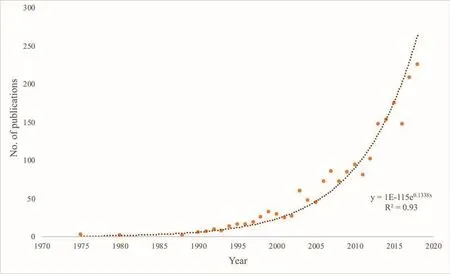
Fig.1 Temporal trend of scientific articles published on the topic “natural capital”.
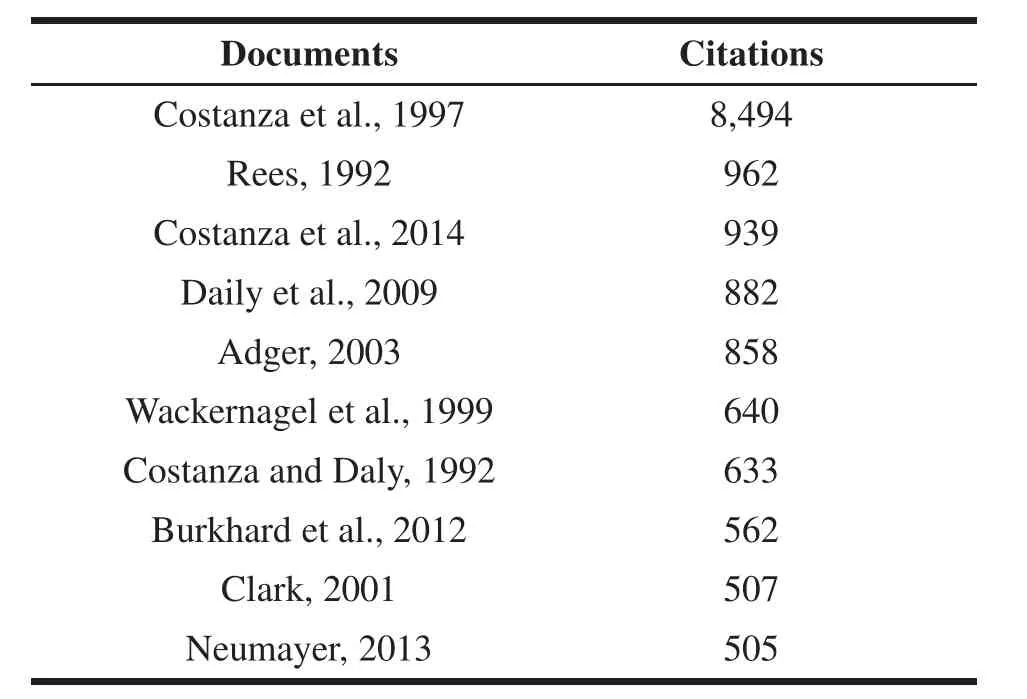
Table 3 Most cited documents on the topic of“natural capital”.
3.2.1 Citation analysis of documents
The 10 most cited documents dealing with the topic of natural capital are listed in Table 3.The importance of the milestone article “The value of the world’s ecosystem services and natural capital”published in Nature by Costanza et al.(1997)is reflected by its high number of citations.
3.2.2 Co-authorship analysis of authors
The co-authorship analysis of authors produced 4,845 results.Among them,86 authors met the default threshold of a minimum of 5 published documents,while documents with a number of co-authors greater than 25 were excluded.The largest set of connected authors is composed by 50 authors,divided into 9 clusters and shown in the network map(Fig.2).The top 20 authors are reported in Table 4 ranked by number of citations.
The results ofthe co-authorship analysis ofauthors show well-defined clusters with almost half of the authors not connected to the main network,forming small networks or even single authors.
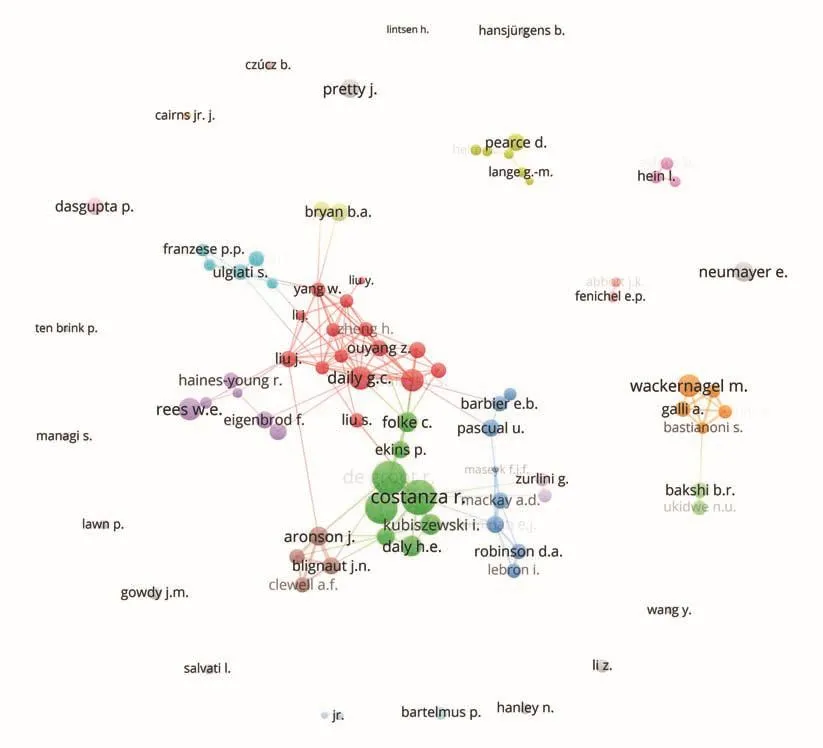
Fig.2 Co-authorship network map of authors publishing on natural capital(the size of the items is based on the number of citations).
3.2.3 Co-authorship analysis of countries
The co-authorship analysis of countries revealed that 59 out of 149 countries published at least 5 articles on natural capital.The network map shows the selected authors divided into 8 clusters(Fig.3).Table 5 shows the first 10 countries ordered by “total link strength”.The results highlight the leading role of United States and United Kingdom in natural capital research,being both more productive and more connected to other countries in the network,with a higher number of publications and collaborations.
3.2.4 Citation analysis of journals
Thecitation analysis ofjournals resulted inanoverall number of951 journals,among which65 metthe minimum threshold of 5 articles.The first 20 journals ranked by number of produced documents are shown in Table 6.The interest of both economics and ecology towards the topic of natural capital is well reflected in the results(Fig.4).
3.2.5 Co-occurrence analysis of keywords
The analysis of the co-occurrence of keywords produced 4,402 results.Applying a threshold of 5 occurrences,199 keywords were selected and grouped into 12 clusters(Fig.5).The first 20 keywords by “total link strength”are listed in Table 7.Keywords ranking higher by “total link strength”reflect the topics most related to the study of natural capital.In particular,natural capital research resulted to be closely linked to ecosystem services and sustainability topics(Table 7).
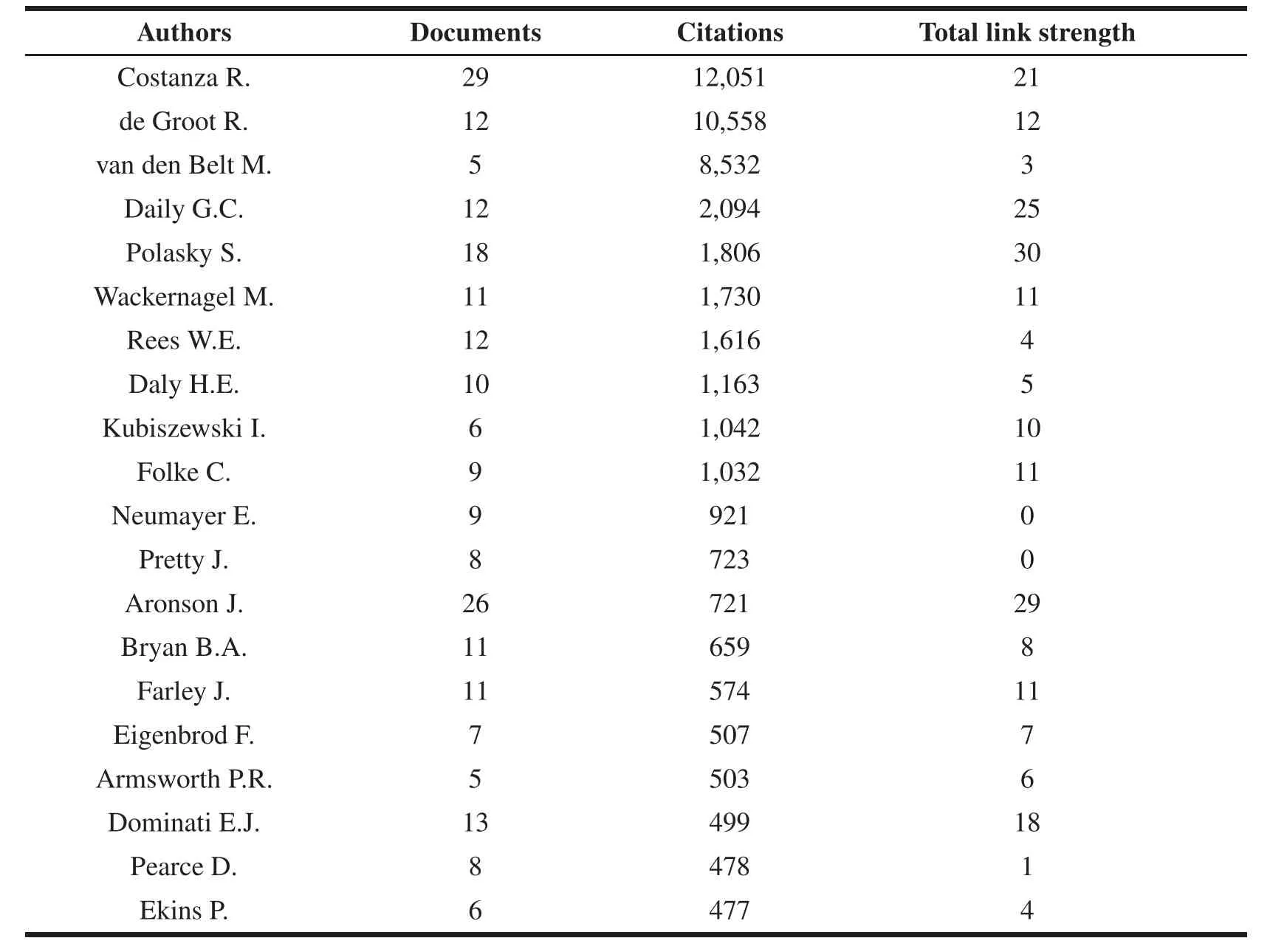
Table 4 The table shows the first 20 items of the co-authorship analysis of authors ordered by number of citations.
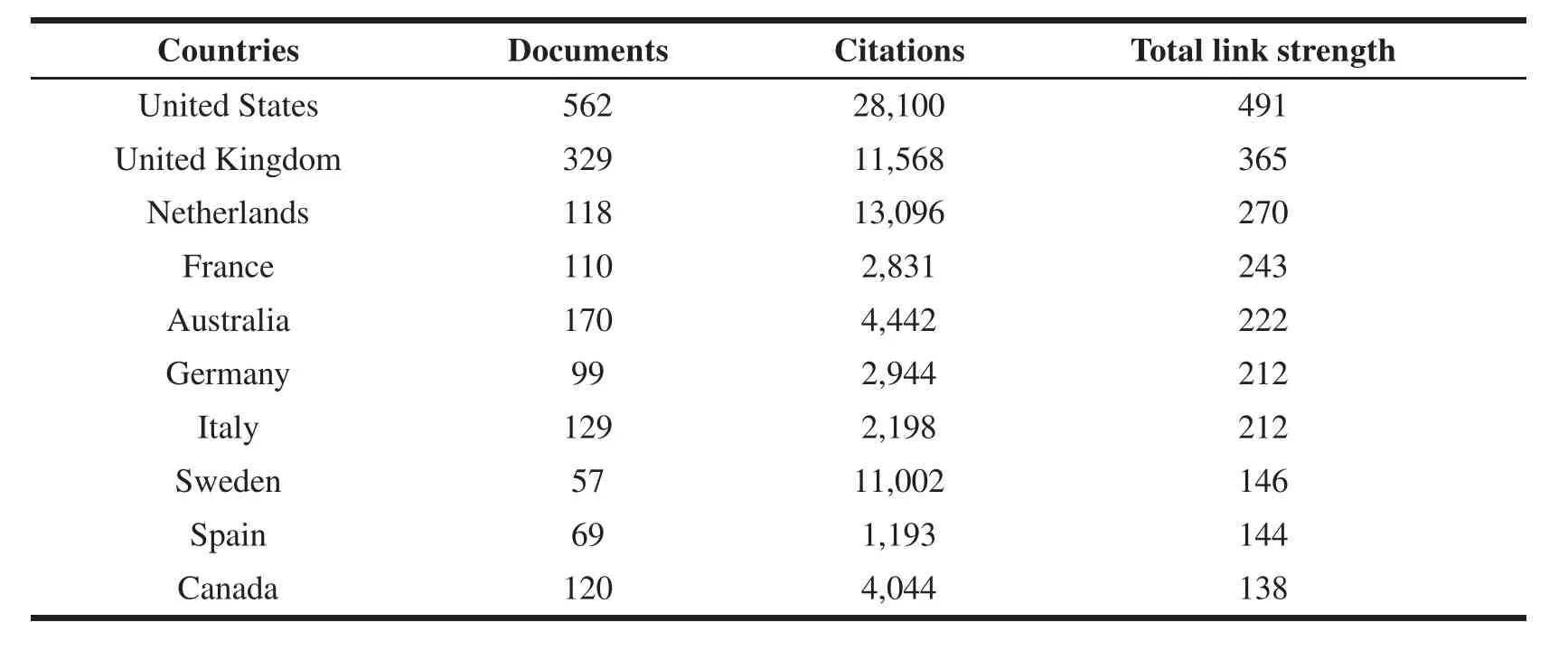
Table 5 The table shows the first 10 results of the co-authorship analysis of countries ordered by “total link strength.”
4 Conclusions
In this study,we explored the global scientific literature on the topic of natural capital by performing a bibliometric network analysis using VOSviewer software.The investigation of the networks of authors,countries,journals,and keywords allowed a comprehensive overview of the scientific literature on natural capital.Results showed an increase in the attention given to the topic of natural capital worldwide.In particular,a strong link between natural capital and the topics of ecosystem services and sustainability was identified.However,previous studies performed on “ecosystem services”revealed a much larger amount of publications reflecting the stronger attention given to this topic.
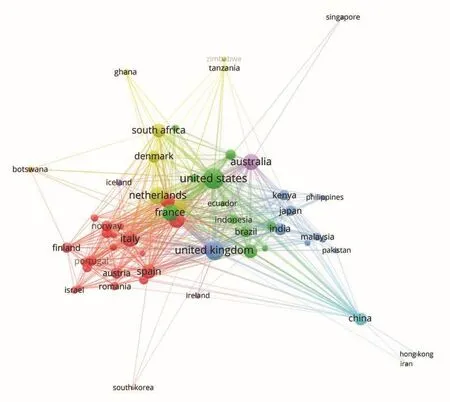
Fig.3 Co-authorship network map of countries publishing on natural capital(the size of items is based on the“total link strength”).
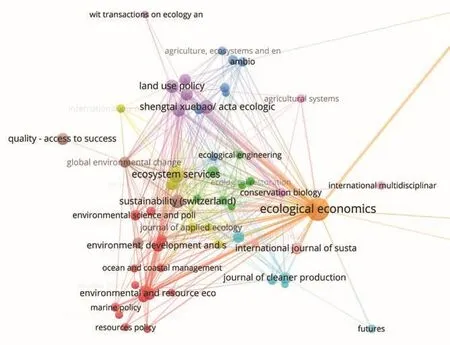
Fig.4 Citationnetworkmapofjournalspublishingonnaturalcapital(thesizeofitemsisbasedonthenumberofdocuments published on the topic of natural capital).
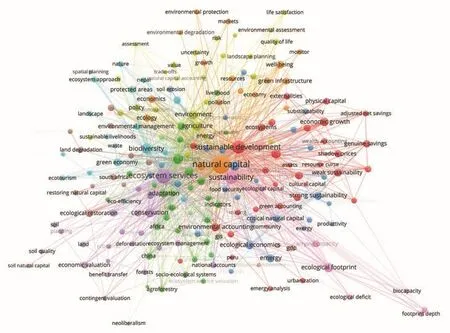
Fig.5 Co-occurrence network map of keywords of published articles on natural capital(the size of the items is based on the“total link strength”).
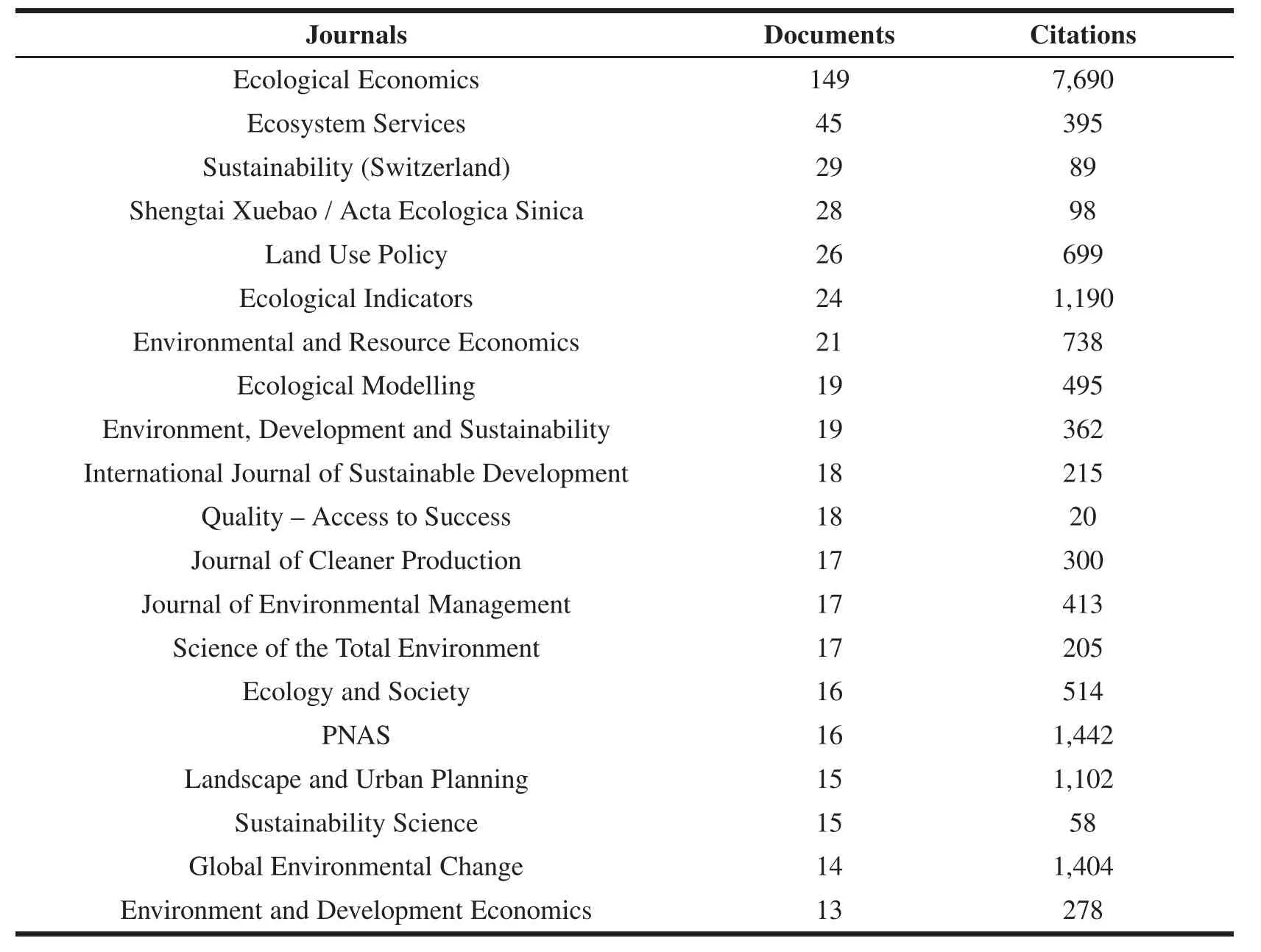
Table 6 The table shows the first 20 results of the citation analysis of journals ordered by number of documents.
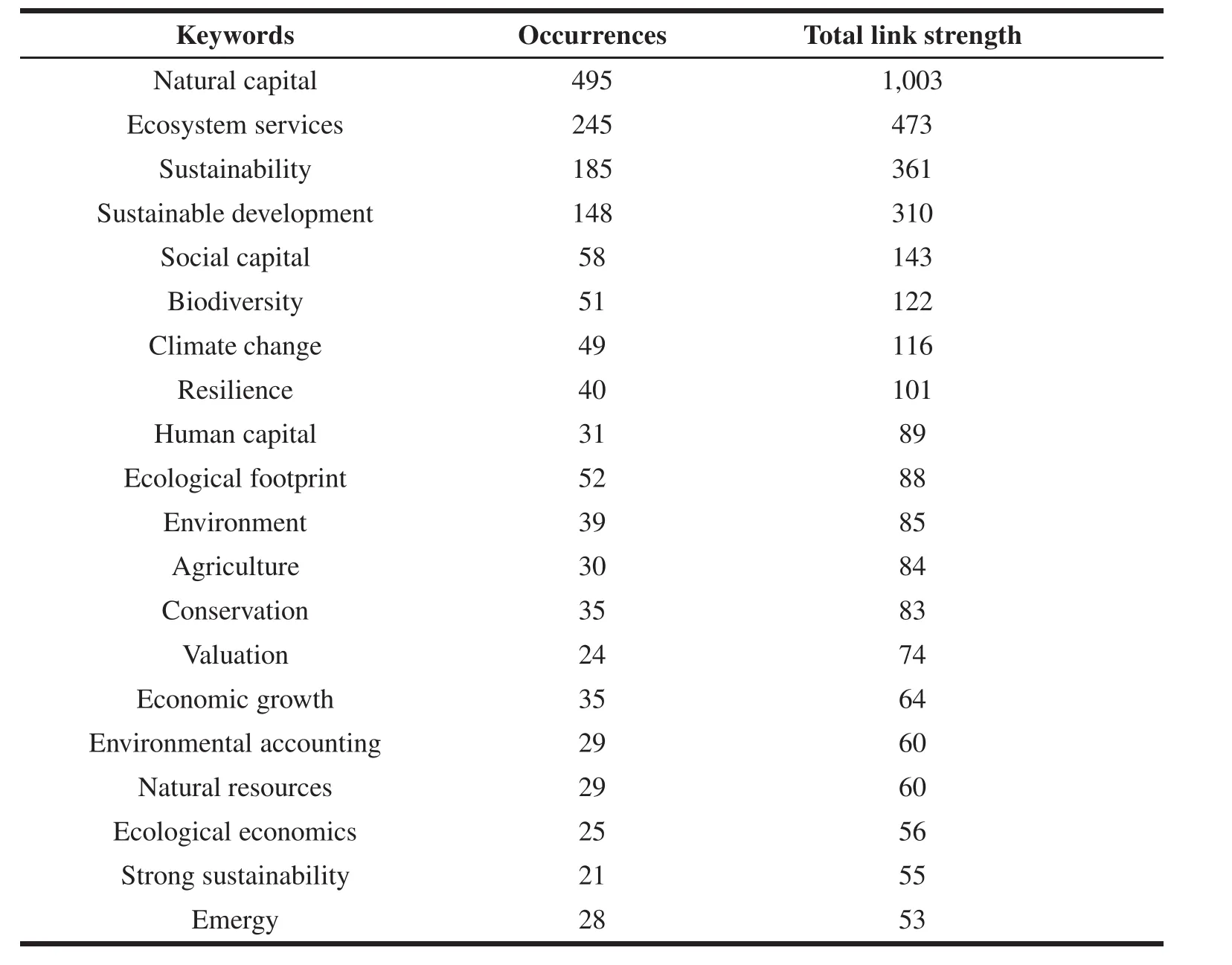
Table 7 The table shows the first 20 results of the co-occurrence analysis of keywords,ordered by “total link strength”.
The combined use of social network analysis and bibliometrics proved to be a promising approach for exploring the scientific literature by applying systems thinking in bibliometric science.
杂志排行
Journal of Environmental Accounting and Management的其它文章
- Spatial Analyses of An Integrated Landscape-seascape Territorial System:The Case of The Overcrowded Gulf of Naples,Southern Italy
- Uptake of Micro and Macronutrients in Relation to Increasing Mn Concentrations in Cistus salvifolius L.Grown in Hydroponic Cultures
- Ecotoxicological Assessment of Virgin Plastic Pellet Leachates in Freshwater Matrices
- Phytotoxic Extracts as Possible Additive in Subsurface Irrigation Drip for Organic Agriculture
- Regional Redistribution Effects of Renewable Energy Subsidies
- Impact of Biochar Amendment on Soil Quality and Crop Yield in a Greenhouse Environment
